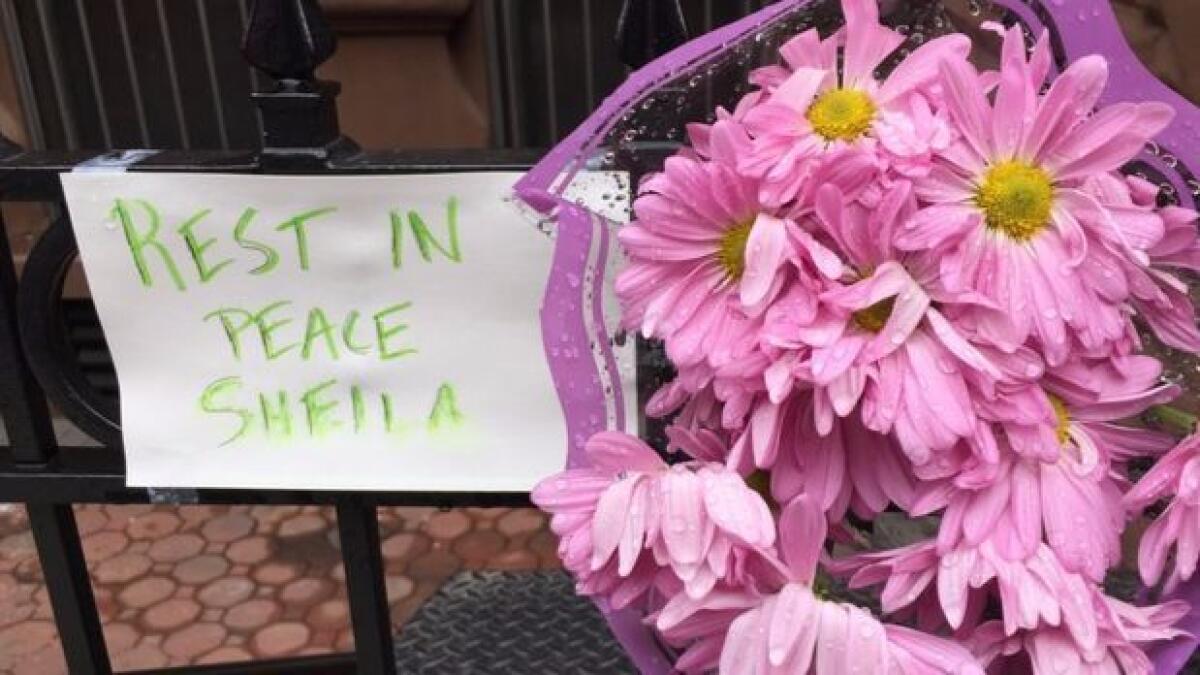Mysterious death of New York judge was initially called a suicide. Now, police think it’s suspicious
The mystery of how a prominent African American judge came to be found floating dead in the Hudson River has deepened as her family and widowed husband disputed suggestions by the New York Police Department that she had committed suicide.
What is known is that Sheila Abdus-Salaam, 65, a judge on the state’s highest court, went for a walk alone on the evening of April 11, locking the door to her Harlem brownstone, leaving her phone and wallet at home.
She had called in sick that day and hadn’t gone to work. Surveillance videos spaced over several hours showed the judge walking briskly alone toward the river wearing sweat pants and white sneakers as though she were perhaps exercising.
The last video of her walking was captured after midnight. The next afternoon, her body, dressed in the same clothing, was found at the edge of the river in an area popular with joggers and bicycle riders.
In the initial days, police said that the death appeared to be a suicide because there were no obvious signs of trauma to her body. Reports circulated that her family had a history of suicide — that her 92-year-old mother had taken her life during the Easter holiday in 2012 and her brother two years later. But her family now disputes those stories, saying in a statement that Abdus-Salaam’s mother died naturally of old age and her brother of terminal lung cancer.
Gregory Jacobs, an Episcopal priest who become Abdus-Salaam’s third husband when they married last year, also challenged the portrayal of his wife as suicidal.
“Reports have frequently included unsubstantiated comments concerning my wife’s possible mental and emotional state of mind at the time of her death. Those of us who loved Sheila and knew her well do not believe that these unfounded conclusions have any basis in reality,” read a statement Jacobs released Wednesday.
What looked like an open-and-shut case has been assigned a special team of investigators by the Police Department, which is now treating Abdus-Salaam’s death as suspicious. The police on Tuesday put out a poster asking for information, accompanied by a picture of the judge, photographed, as always, impeccably dressed, this time in a cream-colored jacket and pearls with wire-rimmed eyeglasses.
Abdus-Salaam grew up in a family of seven children in suburban Washington, D.C., and graduated from Barnard College and Columbia University Law School. After a long career as a public defender and lower-court judge, she became in 2013 the first African American woman on the Court of Appeals, as New York’s highest court is known. Last summer, she wrote what was considered a landmark decision in the state, awarding visitation rights to a nonbiological parent in a gay couple.
Since the 1980s, Abdus-Salaam had lived in Harlem. She married a man from the neighborhood who had converted to Islam, continuing to use his name professionally after their divorce.
The brownstone she bought in the 1980s, when New York’s economy was in the doldrums and the streets were racked with crime, is now worth about $3 million. It is on one of Harlem’s prettiest streets, lined with historic homes and flowering trees, in a rapidly gentrifying neighborhood with restaurants serving sushi and soul food. On Thursday, a tour guide was showing European tourists the street, stopping to point out the flowers left out front in tribute to the popular judge.
“It is very weird,” said John Audate, 60, a neighbor whose wife helped Abdus-Salaam buy the brownstone in the 1980s. “She had a good job and a nice house. It’s devastating to us and very hard to believe she killed herself.”
Abdus-Salaam had remarried the year before. Although her husband continued to live at the diocese in Newark, N.J., he often spent weekends at the brownstone, and neighbors would see them strolling. The weekend before her death, Abdus-Salaam had spent the weekend with him in Newark.
Although Abdus-Salaam didn’t often open up about her private life, one thing people knew about her was that she loved to swim.
“She was like a fish in water,” Audate said. “She told my wife how much she loved the beach and pools when she was a girl.”
“This whole story seems so unlikely. I don’t think it is so easy to kill yourself by drowning,” said Todd Millner, 47, a film editor who lives a few doors away.

The suspicions about Abdus-Salaam’s death have been fueled in part by the death of another African American judge the day before in Illinois. Cook County criminal court Judge Raymond Myles was shot April 10 outside his home in Chicago in what police are calling a robbery.
Abdus-Salaam’s death has attracted much speculation on social media and in the New York tabloids.
“She was a black woman in an age of anti-blackness and white supremacy. She was a woman in an age where violence against women is too often dismissed,” wrote political commentator Shaun King in a column Tuesday in the New York Daily News. “Sheila Abdus-Salaam may have very well chosen to check out of this world. That was her decision to make, but the troubling reality is that we live in a time where many ugly forces of evil could’ve also seen her as a threat and killed her.’’
ALSO
An Idaho sheriff’s daunting battle to investigate when children of a faith-healing sect die
Supreme Court orders refunds for people whose criminal convictions are overturned
Deportations of ‘Dreamers’ who’ve lost protected status have surged under Trump
UPDATES:
1:15 p.m. April 21: This article was updated to report additional details about Sheila Abdus-Salaam’s movements before she disappeared.
This article was originally published on April 20 at 3:55 p.m.
More to Read
Start your day right
Sign up for Essential California for news, features and recommendations from the L.A. Times and beyond in your inbox six days a week.
You may occasionally receive promotional content from the Los Angeles Times.






